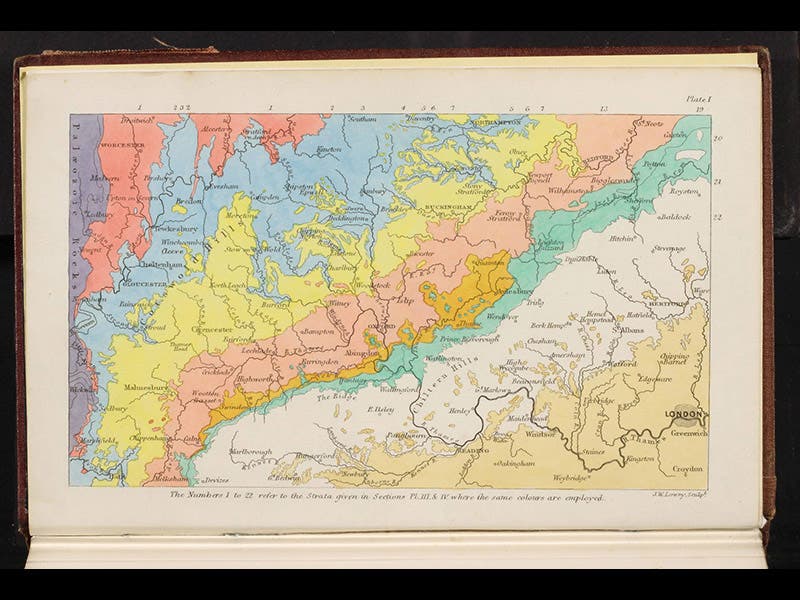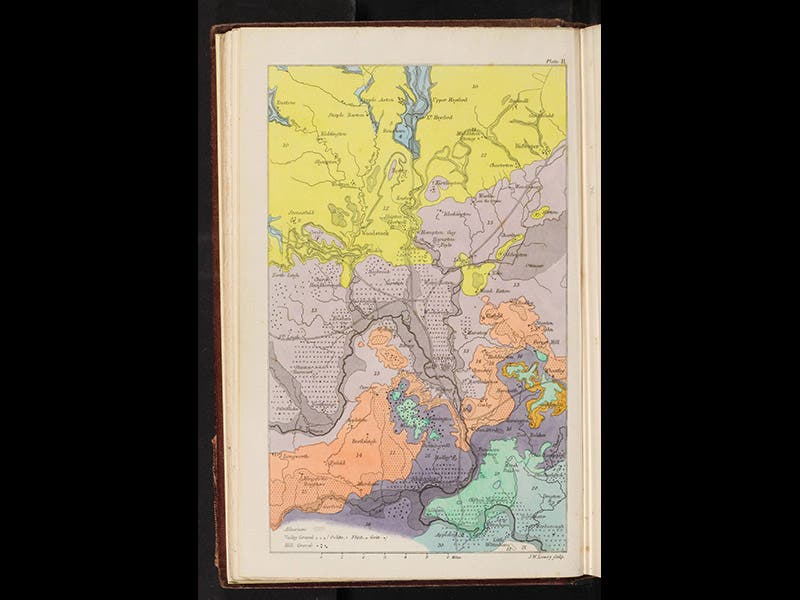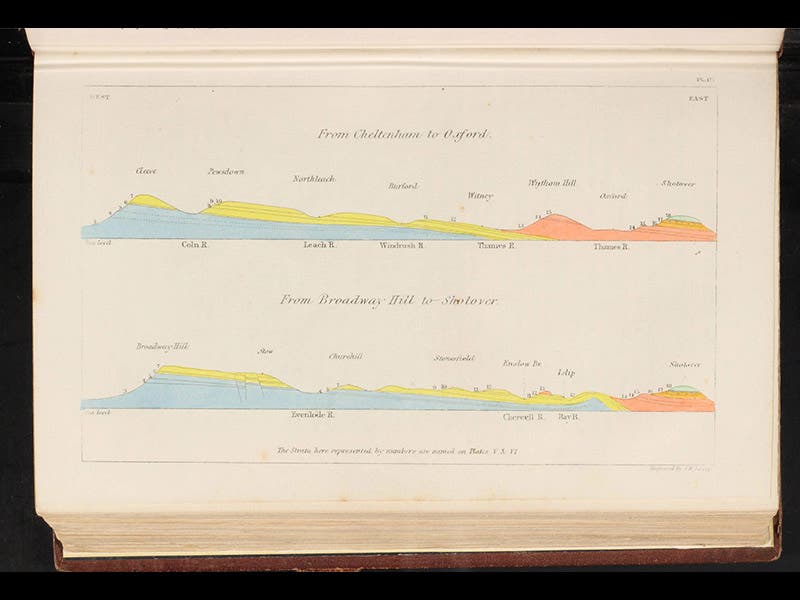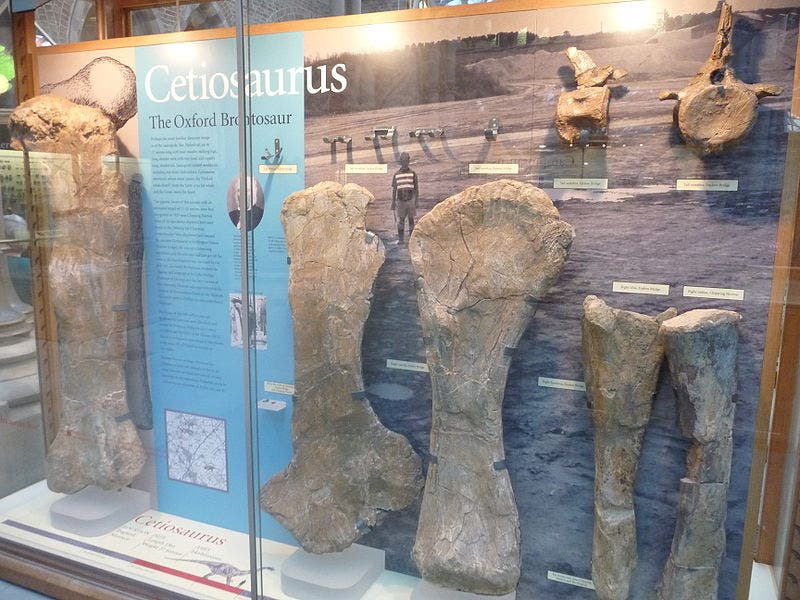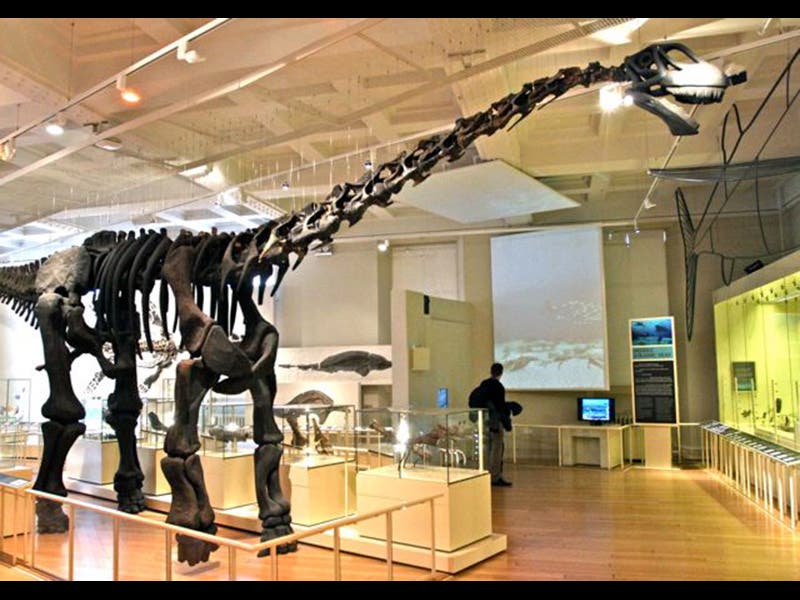Scientist of the Day - John Phillips
John Phillips, an English geologist, was born Dec. 25, 1800. Phillips came from Wiltshire, spent some years as head of the Yorkshire Museum, then served as professor of geology at King' College, London, but he is usually identified with Oxford University, where he succeeded the legendary William Buckland as reader of geology in 1856. Phillips was the nephew of the equally legendary William Smith, the geologist who discovered that strata could be identified by the fossils they contain and thus utterly transformed the science of stratigraphy.
We have 12 books by Phillips in the History of Science Collection; the images above are from one of his later works, Geology of Oxford and the Valley of the Thames (1871). The three color plates demonstrate something that geologists realized before most other scientists illustrating books—the value of a consistent color code. In the map of Oxfordshire (first image), the detail of the environs of Oxford (second image) and the section through the valley (third image), the same colors are used to designate specific formations of rock in all three diagrams, making it easy to go back and forth between them.
The other notable feature of the book is the discussion of the earliest sauropod dinosaur found anywhere in the world, known as Cetiosaurus. The dinosaur was named back in the 1840s, but the early specimens on which the name was based turned out to be invalid, so it was a specimen found by Phillips in 1868 that became the type specimen of the genus. There are several wood engravings of limb bones of Cetiosaurus oxoniensis in the book (fourth image). The actual bones are on prominent display in the Oxford Museum (fifth image), and there is a mounted skeleton, presumably in fiberglass, in the New Walk Museum in Leicester (sixth image).
Dr. William B. Ashworth, Jr., Consultant for the History of Science, Linda Hall Library and Associate Professor, Department of History, University of Missouri-Kansas City


